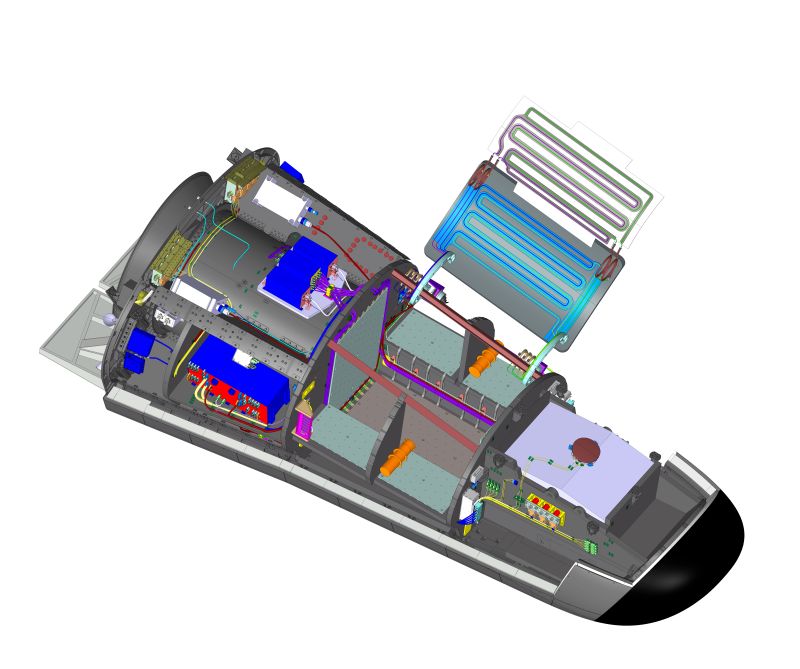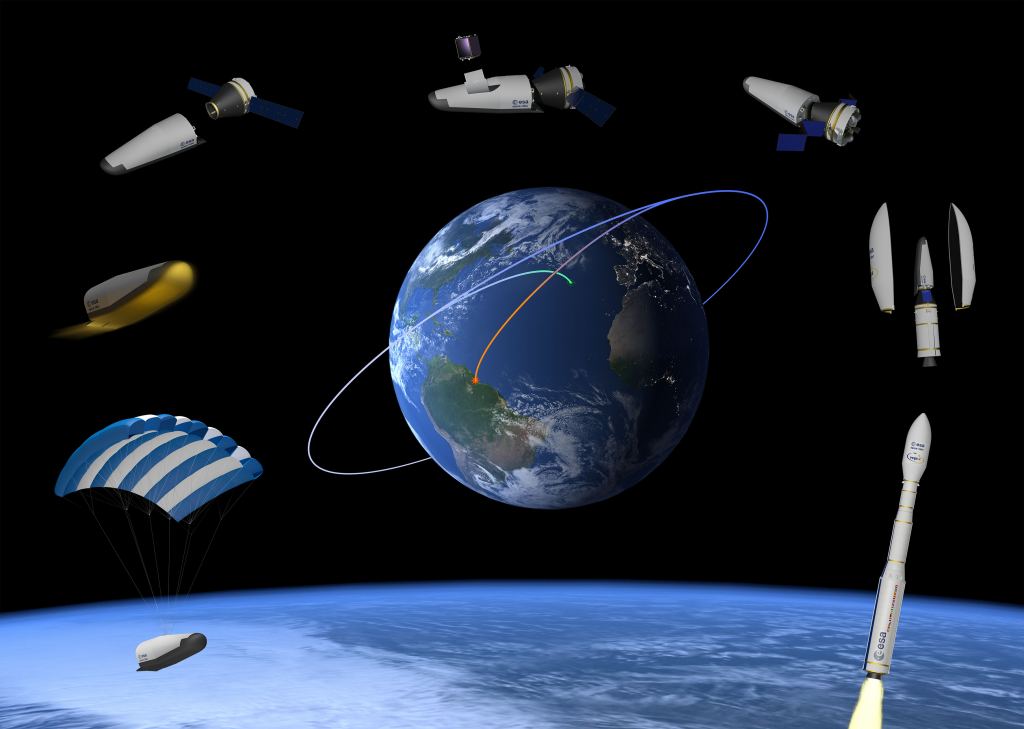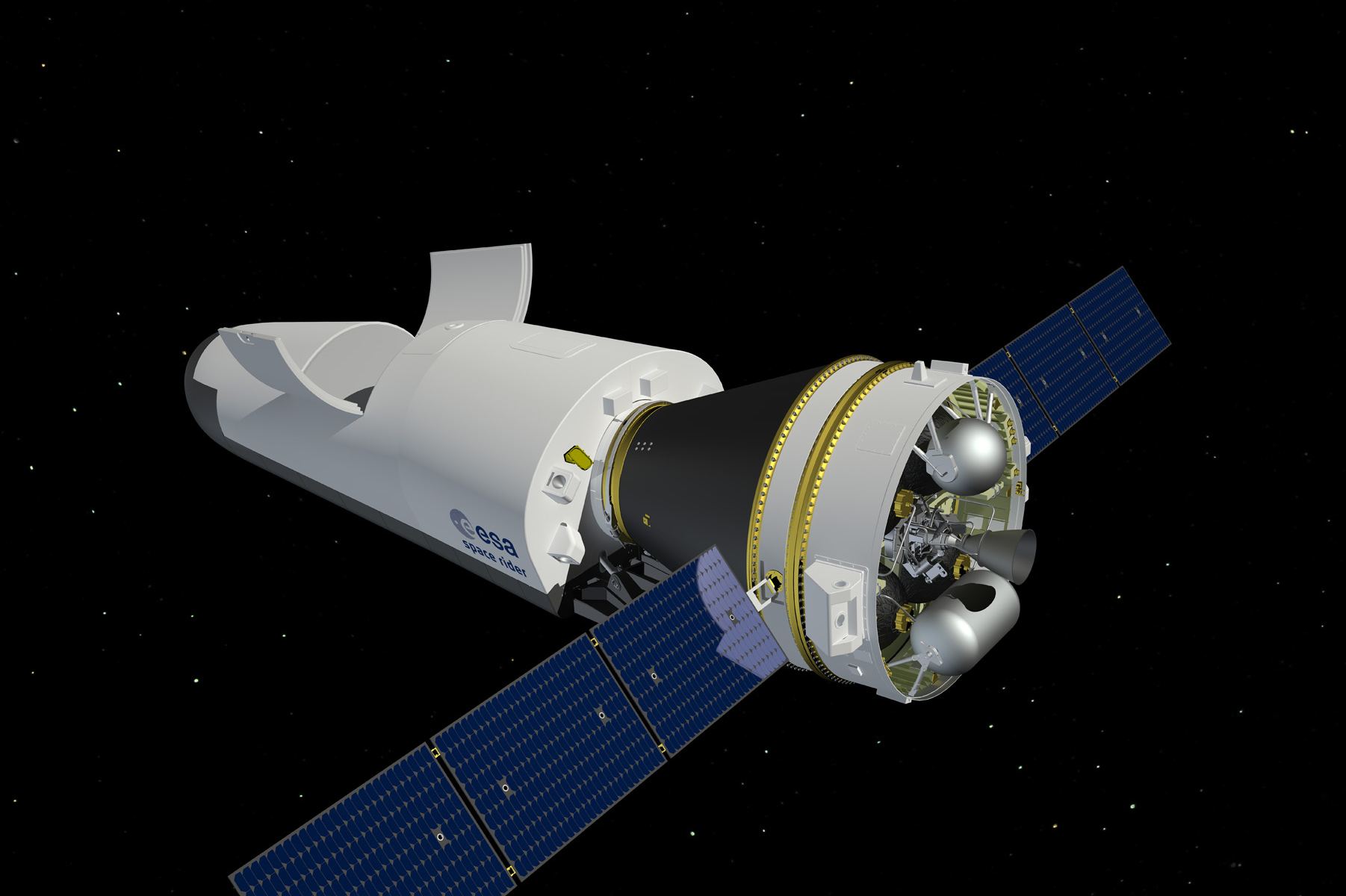The ESA is developing its own spacecraft capable of re-entry into Earth’s atmosphere. The reusable spacecraft is called the Space RIDER (Reusable Integrated Demonstrator for Europe Return), and the ESA says that the Space Rider will be ready for launch by 2022. It’s being designed to launch on the Vega-C rocket from Europe’s spaceport in Kourou, French Guiana.
Space Rider will be an un-crewed vehicle with high-tech capabilities that will provide access to space for scientific and commercial enterprises. The ESA describes it as an “uncrewed high-tech space laboratory” that can stay in orbit for up to two months. At the heart of Space Rider is its cargo bay.
The cargo bay can carry up to 800 kg. (1760 lbs.) in its 1200 litres (42 cu ft.) of payload volume. The bay will be serviced, meaning it’ll provide 600 watts of power for payload. The bay will also be environmentally controlled, and will have control, data handling, and telemetry.
“These capabilities enable Europe to capture new promising markets…”
Giorgio Tumino, ESA’s Vega and Space Rider Development Programmes Manager.

The Space Rider is a logical next step for the ESA. Not only is it a reusable re-entry vehicle designed for space operations at altitudes of 450 km, but it will be able to land near inhabited zones with controlled precision. The spacecraft will offer an array of orbit altitudes and inclinations, and as a consequence will open up new opportunities for the nations in the ESA, and for customers.
“Space Rider is Europe’s first reusable space transportation vehicle. This fascinating challenge is honing our skills in a range of cutting-edge technologies and this will strengthen our position in this competitive market,” commented Jose Longo, ESA’s Space Rider Development Programme Manager.
Space Rider’s operational design will allow all sorts of microgravity experiments, will offer educational possibilities, and according to an ESA press release, will “help prove technologies for Earth observation, science, telecommunication and robotic exploration.” They also say that the spacecraft will demonstrate satellite servicing technologies. All the design details are still being worked out, but the manufacturer CIRA (Centro Italiano Ricerche Aerospaziali) say that Space Rider will be able to rendezvous with the International Space Station and receive scientific payloads with its robotic arm for return to Earth.

Space Rider is not being built from scratch. The ESA has been developing the idea for a while. The reusable spacecraft is adapted from Vega C’s AVUM+ stage, an upper stage designed for attitude control and orbital positioning. The Vega C rocket is scheduled to be ready by 2020.
It also has the ESA’s Intermediate eXperimental Vehicle (IXV) as a precursor. Space Rider is based on the IXV, but with the added additions of landing gear, and the crucial multi-purpose cargo bay. Other design improvements mean that each Space Rider should be able to complete five or six missions.
According to the ESA, the Space Rider’s background lays the groundwork for fairly rapid development, and will keep the cost per kilogram for payloads low for customers, and will make the system competitive in the rapidly changing global space market. The spacecraft will use off-the-shelf components wherever possible, and will reuse expensive components when safe to do so. There will be only minimal refurbishment between flights, which will also keep costs down.
Giorgio Tumino, ESA’s Vega and Space Rider Development Programmes Manager added: “Space Rider provides the European Vega Space Transportation System with the unique opportunity to complement today’s capability to access space, with the capabilities to operate and return payloads from space for a variety of in-space applications, in a competitive manner with respect to any alternative solution.
Space Rider will feature ceramic and ablative materials to handle the heat from re-entry into Earth’s atmosphere. The thermal protections system will also have reaction control rockets and aerodynamic control surfaces. Once it’s completed re-entry, the spacecraft will descend with the aid of a parafoil, which it will use to guide its way to a soft landing.
The Space Rider system will vault the ESA into the future by providing one more alternative in the global space market. It’s impossible to predict in advance all the ways that space agencies, research institutions, and companies will be able to use the Space Rider. It could be a game changer, and according to Tumino, potential customers are already excited at the prospect.
“These capabilities enable Europe to capture new promising markets as is indicated by the extraordinarily enthusiastic feedback received from potential end users attending our workshops and responding to ESA’s announcements of opportunities on Space Rider.”
The Space Rider system was initially proposed in 2016, and will reach its critical design review at the end of this year.
Sources:
- Press Release: Space Rider: Europe’s Reusable Space Transport System
- ESA Web Page: Space Rider
- ESA: Intermediate Experimental Vehicle (IXV)
- Wikipedia Entry: Vega Rocket
- CIRA (Centro Italiano Ricerche Aerospaziali)
- AVIO: AVUM+ stage

